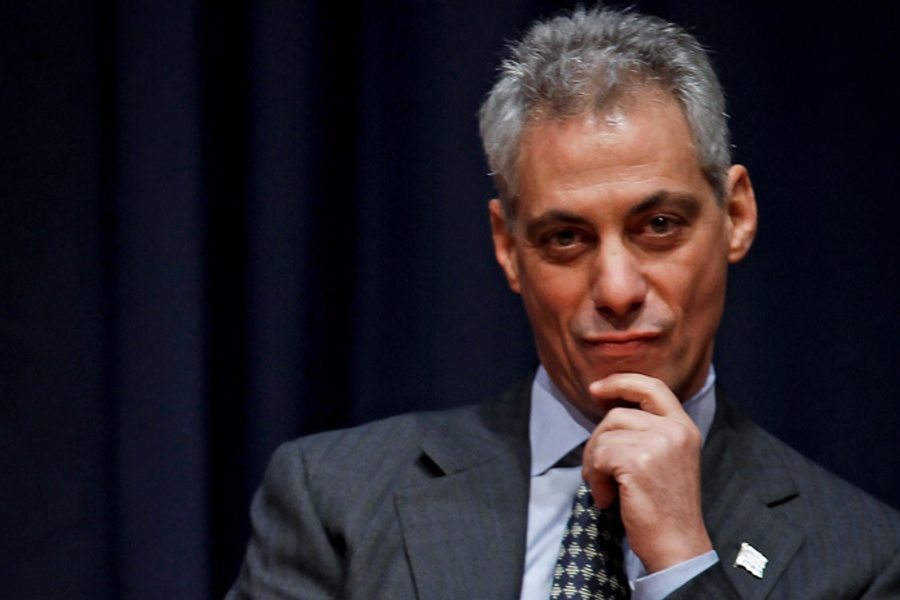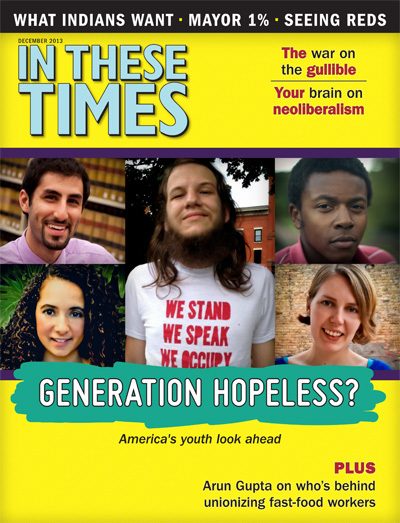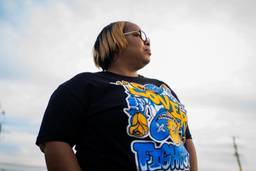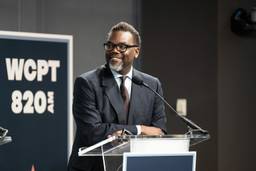How Mayor Rahm Emanuel Awoke a Progressive Resistance in Chicago
The war between Chicago’s 99% and its latest mayor.
Kari Lydersen

March 4, 2012, was Chicago’s 175th birthday, and the city celebrated with a public party at the Chicago History Museum. The event promised actors portraying famous Chicagoans, including Jane Addams, founder of Hull House and advocate for immigrants, children and factory workers. Little did the organizers know that the show would be stolen by a woman some viewed as a modern-day Jane Addams — more eccentric and irascible, less renowned and accomplished, but just as willing to raise her voice and speak up for the weak and vulnerable.
Mayor Rahm Emanuel grinned broadly as the Chicago Children’s Choir, dressed in red, sang a lively version of “Happy Birthday.”
He had reason to smile.
Ten months earlier he’d been inaugurated as leader of the nation’s third most populous city, taking the reins from legendary Mayor Richard M. Daley. And while his term hadn’t been a cakewalk, so far things seemed to be going well. He had inherited a nearly $700 million budget deficit and attacked it with an aggressive round of cost-cutting and layoffs. The labor unions had resisted, but ultimately Emanuel was able to strike some deals and come out on top. Meanwhile, he was moving forward with his plans to institute a longer school day, a promise that had gained him positive attention nationwide. He was already assuming Daley’s mantle as the “Green Mayor”: In February he had announced that the city’s two coal-fired power plants would close and miles of new bike lanes were in the works.
Emanuel had even snagged two important international gatherings for Chicago: the NATO and G8 summits, to be held concurrently in May 2012 — the first time both would be hosted in the same U.S. city.
There had been sit-ins and protests by community groups and unions related to the summits, school closings, and other issues. But Emanuel had shown a knack for avoiding and ignoring them, and so far he didn’t seem to have suffered too much political fallout.
As Emanuel watched the swaying, clapping singers at the birthday party, he didn’t seem to notice a crinkled orange paper banner bobbing in the crowd of revelers. It said, “History Will Judge Mayor 1 Percent Emanuel for Closing Mental Health Clinics.”
He’d gotten the moniker early on in his tenure. As Occupy Wall Street – inspired protests swept the nation, it was a natural fit for a mayor known for his high-finance connections and brief but highly lucrative career as an investment banker.
A staffer did notice the banner, and told the man holding it to put it away. Matt Ginsberg-Jaeckle, a lanky longtime activist, complied, partially folding the banner and lowering it into the crowd. The song ended, and Emanuel began shaking hands with the singers and other well-wishers near a colorful, multi-tiered birthday cake.
Then a shrill, rough voice cut through the chatter, causing heads to turn as the orange banner was unfurled and raised again. “Mayor Emanuel, please don’t close our clinics! We’re going to die. … There’s nowhere else to go. … Mayor Emanuel, please!” cried a woman with a soft, pale face, red hair peeking out from a floral head scarf and dark circles around her wide eyes that gave her an almost girlish, vulnerable expression.
It was Helen Morley, a Chicago woman who had struggled all her life with mental illness but still managed to become a vocal advocate for herself and others in the public housing project where she lived, and for Chicagoans suffering from disabilities and mental illness. For the past 15 years she’d been a regular at the city’s mental health clinic in Beverly/Morgan Park, a heavily Irish and African-American, working- and middle-class area on the city’s Southwest Side. It was one of six mental health clinics that Emanuel planned to close as part of sweeping cuts in his inaugural budget. He said it made perfect economic sense — it would save $3 million, and the patients could move to the remaining six public clinics. But Morley and others pleaded that he didn’t understand the role these specific clinics played in their lives and the difficulty they would have traveling to other locations.
Morley’s eyes were fixed unblinkingly on the mayor as she walked quickly toward him, calling out in that ragged, pleading voice, her gaze and gait intense and focused. Almost all eyes were on her — except for those of the mayor, who shook a few more hands and then pivoted quickly and disappeared through a door, studiously ignoring Morley the entire time.
“Mayor Emanuel!” she cried again as he dashed out. “Please stay here, Mayor Emanuel!”
The abruptness of the exit, the cake sitting there untouched, the lack of closing niceties, and the crowd milling around awkwardly gave the impression that the event had been cut much shorter than planned.
With the mayor gone, Ginsberg-Jaeckle and fellow activist J.R. Fleming stepped up on the stage and lifted the banner behind the cake. Morley centered herself in front of them and turned to face the remaining crowd, earnestly entreating them, “People are dying. They aren’t going to have nowhere to go!”
Beneath the mayor’s notice?
Emanuel’s critics and admirers have both described him as a quintessential creature of Washington and Wall Street, a brilliant strategist and fundraiser who knows just the right way to leverage his famously abrasive personality to get wealthy donors to open their wallets and to help him win races. He became a prominent fundraiser for powerful politicians in his twenties, he made some $18 million in investment banking in just two years, he played central roles in two White Houses, and he orchestrated a dramatic Democratic takeover of the House of Representatives during his six years in Congress. He clearly knows how politicking works. But being mayor is different, or at least it should be. In Washington people are often tagged as political allies or adversaries, fair game for manipulation or intimidation. In Congress, Emanuel represented his constituents, but the daily grind had a lot more to do with Beltway machinations and maneuvers. Running a city, where you are elected to directly serve people and listen to them, is supposed to be a different story. Emanuel was treating Chicago as if it were Washington. Perhaps that’s why, even in his brief tenure as mayor, he has seemed to find it so easy to ignore the parents, teachers, pastors, students, patients, and others who have carried out multiple sit-ins and protests outside his fifth-floor office in City Hall.
These citizens frequently note that Daley had not been particularly accessible, sympathetic or democratic in his approach, but at least he would meet with people, acknowledge them, make perhaps token efforts to listen to their proposals and act on their concerns. Emanuel can’t seem to find the time for many members of the public, they complain, even as he says he wants their input on issues like school closings.
“His response was to ignore us,” said Jitu Brown, education organizer for KOCO, one of the city’s oldest and most respected civil rights organizations. “We had our problems with Mayor Daley, but Mayor Daley surrounded himself with neighborhood people and he himself was a neighborhood person. This man, Rahm Emanuel, has surrounded himself with corporate people. This administration is doing the bidding of corporations and robbing us of the things our parents fought for.”
If Emanuel thought primarily in terms of political and financial strategy, and the costs and benefits of how he interacted with certain people, it’s understandable that he would dart away from Helen Morley. But she was clearly a woman in deep distress, both at the birthday party and at previous protests at City Hall.
“They knew who she was, she was at every sit-in,” said Ginsberg-Jaeckle. “But she was never contacted by them, they never met with her, not once.”
Three months later, Helen Morley would be dead. Her friends blamed the closing of the mental health center. Of course, there was no direct link between the clinic closing and the heart attack that felled Morley at age 56. But her friends are sure that the trauma of losing her anchor — the clinic and the tight-knit community there — is what pushed her ailing body past the limit. They said as much during a protest outside the city health department offices a week and a half after Morley’s death, with a coffin and large photos of her in tow.
“We don’t have an autopsy or a medical examiner’s report. You can’t show her death was related to the clinic closure,” said Ginsberg-Jaeckle. “But it would be hard for anyone to say that given her heart conditions and other conditions she suffered from, that the stress and cumulative impact of everything she was going through didn’t play a major role.”
If Emanuel did indeed think largely in terms of adversaries, Morley was not a worthy one for him. She was impoverished, unemployed; many saw her as “crazy,” as she herself sometimes said she was. Her unhappiness with the mayor and her death would cost him no political capital.
But Emanuel’s attitude toward Morley and the other members of the Mental Health Movement was perhaps emblematic of a deeper issue that would haunt him in the not-too-distant future. Although he seemed adroit at manipulating the levers of power, Emanuel did not seem to understand the power of regular Chicagoans, especially Chicagoans organized into the city’s rich mosaic of community groups, labor unions, progressive organizations and interfaith coalitions.
This failing would become fodder for national pundits in the fall, as the Chicago Teachers Union made headlines around the world by going on strike and filling the city streets with waves of shouting, chanting Chicagoans clad in red T-shirts. Emanuel appeared shocked and disgusted with the union’s audacity, attacking them in a public relations campaign more reminiscent of a brutal electoral race than contract negotiations between two teams of public servants.
A NAFTA neoliberal
Many pundits describe Emanuel as the epitome of the modern centrist neoliberal Democrat. The North American Free Trade Agreement (NAFTA) is often viewed as a symbol of neoliberalism, a global socioeconomic doctrine with intellectual roots in Chicago. Emanuel was a key architect of the trade agreement, which ultimately cost tens of thousands of U.S. jobs and brought social and economic devastation to Mexico.
To the extent that Emanuel genuinely wants to make the world a better place for working people, he thinks market forces and business models are the way to do it, and he clearly (and perhaps rightly) thinks that he understands these institutions far better than any teacher or crossing guard or nurse. From that viewpoint, the messy attributes of democracy — sit-ins, protests, rallies, people demanding meetings and information and input — simply slow down and encumber the streamlined, bottom-line-driven process Emanuel knows is best. But many regular Chicagoans see injustice, callousness and even cruelty in this trickle-down, authoritarian approach to city governance. They see the mayor bringing thousands of new corporate jobs subsidized with taxpayer dollars while laying off middle-class public sector workers like librarians, call-center staffers, crossing guards, and mental health clinic therapists. They see him closing neighborhood schools, throwing parents’ and students’ lives into turmoil. They see him (like Daley) passing ordinances at will through a rubber-stamp City Council, leaving citizens with few meaningful avenues to express their opposition to policies changing the face of their city.
If there’s one thing Chicagoans have demonstrated ever since the city rose out of a swamp of stinking onions, it is that they will not quietly acquiesce when they sense injustice. This rich tradition stretches from the Haymarket Affair of 1886 to the garment workers strikes of the early 1900s; from the 1968 Democratic National Convention protests to the first massive immigration march of 2006. Like the proud Chicagoans who came before them, the Chicago Teachers Union, the Mental Health Movement, and other contemporary groups are committed to questioning and shaping the meanings of democracy, leadership, power and justice.
Rahm Emanuel’s tenure as mayor of Chicago has provided a stage for these populist and progressive institutions to grapple with other powerful forces in a drama about the continual evolution of a great American city.
Hands off our schools
How would Emanuel’s tenure be judged through the lens of history? Would he be seen as popular and effective? Or autocratic and brutal? Or both?
That question was not a rhetorical one for the scores of parents and students who attended the more than a hundred meetings in the winter and spring of 2013 about plans to close up to 100 or more public schools. In countless interviews with reporters, comments at public meetings, and chats with friends, the idea was often repeated: School closings were a clear sign that certain residents were no longer welcome in Chicago, that they weren’t part of the future plan. Emanuel and his supporters continued repeating their talking points about creating schools where all students would have equal opportunity, about allowing low-income minority youth to fulfill their dreams. But increasingly many Chicagoans — particularly African-American ones — were not buying it.
At the school closing hearings, parents, teachers and students begged the mayor and education board — often tearfully — to save their schools. In promoting charter schools Emanuel and other backers frequently invoked the image of “parent choice.” With scores of public schools on the chopping block, hundreds of parents made their choice quite clear: they and their kids wanted their schools to stay open.
By March schools officials had, they said, analyzed the input from the community hearings. On March 21, the big news came: the list of schools to be closed. There were 54: one small high school and 53 elementary schools. Additionally some schools would be combined with other schools, shoehorned into the same buildings. The closings were mostly in low-income African-American neighborhoods on the South and West Sides. It made national headlines as the largest-ever mass school closing plan.
The reaction was immediate.
Families saw the closing of their local school as the unmooring of one of their few anchors. Walking an extra mile— even an extra half mile — would mean significantly increased danger of violence. Parents and community activists demonstrated this point to reporters and some sympathetic aldermen by taking them on the new paths their kids would have to take, past loitering gang members, boarded up buildings, and busy intersections.
A week before the school board vote, students and activists staged a “die-in” on the South Side, near an elementary school slated for closure. The die-in was organized by Fearless Leading by Youth, the group of teenagers from the largely African-American, low-income neighborhoods on the South Side.
They lay down in the street in white T-shirts adorned with fake blood; five were arrested. Among them was Jesus “Chuy” Campuzano, an energetic young activist who was a central part of the Mental Health Movement. The protest got him “eleven hours in lockup” on charges of disorderly conduct, as he recounted a week later. “Some people didn’t believe I was up to that arrest, but I did it and I’m willing to do it again.”
The weekend before the board vote, Karen Lewis was reelected president of the Chicago Teachers Union with 80 percent support. Over the next three days, hundreds of parents, students, and teachers marched throughout the city visiting schools to be closed and protesting the plan. They rallied at City Hall, and 23 were arrested for blocking elevators. Students walked out of classes to join the demonstration — more than 100 by organizers’ count.
Not surprisingly, Campuzano was there all three days. It was a grueling week, but at times like that he would think of Helen Morley. He remembered her struggling with various physical ailments but refusing to go home, even when other activists would try to persuade her to. “She was the one who taught me to stand up for what I believe in,” said Campuzano. “She taught me not to let myself get bullied. The big bully in this town is the mayor. And if Helen were still here, he’d be having to deal with her every day.”
The night before the vote, Campuzano sat in a brightly decorated Mexican taquería in Rogers Park, the North Side neighborhood where he’d been staying with friends since falling out with his parents. The air was humid and electric with the feel of a gathering storm. Campuzano chatted with the restaurant staff as he flipped through photos from the past week on his cellphone. There was one of him being pushed roughly into a squad car at the die-in, a grimace on his face. A shot of him with Maxine, a union janitor he met on the first of the three-day marches. Her goddaughter was killed in a shooting that night, he later learned. “On the third day she was there again,” said Campuzano, his unwavering gaze and steady voice providing a sharp contrast to his animated chanting style. “She said she couldn’t take it anymore, that she had to stand up to this person who was taking their jobs away. She was talking about Rahm.”
Another of Campuzano’s pictures showed Pilar, a teenage girl with burgundy streaks in her dark hair who was also arrested at the die-in. She would be elected prom queen a few nights after, he noted. Then there was Asean Johnson, a 9-year-old student at Garvey Elementary School, slated for closing. Asean’s mother noticed Campuzano’s style and told her son to emulate him. So Asean stuck near Campuzano during the march, shouting, “Education is a right, that’s why we have to fight!” Videos were widely circulated online showing the diminutive boy speaking out passionately and confidently. People suggested he should run for mayor, or even president. “I’m like, ‘What did we create here?’ ” said Campuzano later. “Another me!” “
When those children become adults, there will be a brighter future for the city,” he concluded. “Thanks to the mayor, there will be a better Chicago.”
Excerpted from Mayor 1%: Rahm Emanuel and the Rise of Chicago’s 99% (Haymarket Books, 2013). All rights reserved.
Chicago readers! Join Haymarket Books for a launch party for Mayor 1% on Tuesday, November 19 featuring Kari Lydersen and other Chicago-area journalists and activists. RSVP here.
Kari Lydersen is a Chicago-based journalist, author and assistant professor at Northwestern University, where she leads the investigative specialization at the Medill School of Journalism, Media, Integrated Marketing Communications. Her books include Mayor 1%: Rahm Emanuel and the Rise of Chicago’s 99%.









